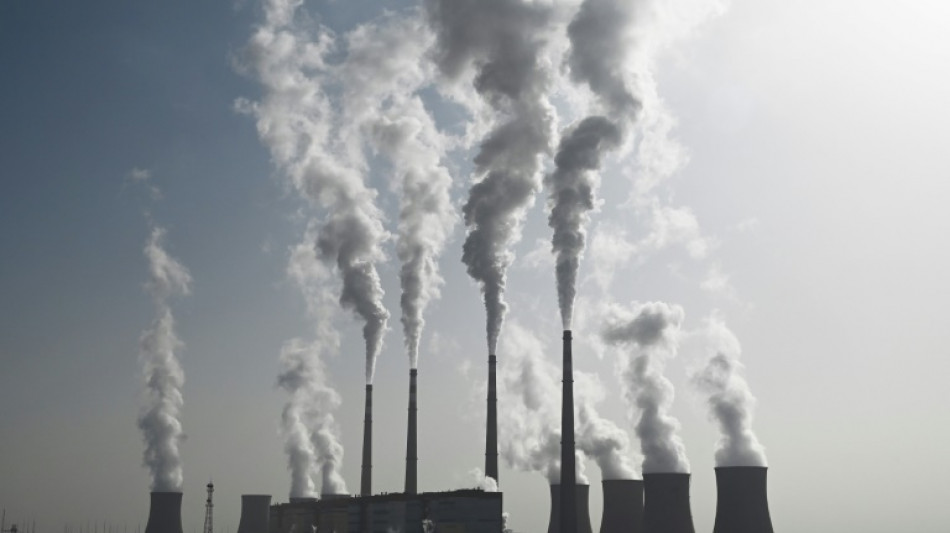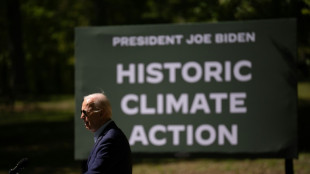
-
 Odermatt stays hot to break Swiss World Cup wins record
Odermatt stays hot to break Swiss World Cup wins record
-
Neville says Rashford's career at Man Utd nearing 'inevitable ending'

-
 Syria's new leader vows not to negatively interfere in Lebanon
Syria's new leader vows not to negatively interfere in Lebanon
-
Germany pledges security inquest after Christmas market attack

-
 Putin vows 'destruction' on Ukraine after Kazan drone attack
Putin vows 'destruction' on Ukraine after Kazan drone attack
-
Understated Usyk seeks recognition among boxing legends

-
 France awaits appointment of new government
France awaits appointment of new government
-
Cyclone Chido death toll rises to 94 in Mozambique

-
 Stokes out of England's Champions Trophy squad
Stokes out of England's Champions Trophy squad
-
Gaza rescuers say Israeli strikes kill 28

-
 Sweet smell of success for niche perfumes
Sweet smell of success for niche perfumes
-
'Finally, we made it!': Ho Chi Minh City celebrates first metro

-
 Angry questions in Germany after Christmas market attack
Angry questions in Germany after Christmas market attack
-
China's Zheng pulls out of season-opening United Cup

-
 Minorities fear targeted attacks in post-revolution Bangladesh
Minorities fear targeted attacks in post-revolution Bangladesh
-
Tatum's 43-point triple-double propels Celtics over Bulls

-
 Tunisia women herb harvesters struggle with drought and heat
Tunisia women herb harvesters struggle with drought and heat
-
Trump threatens to take back control of Panama Canal

-
 India's architecture fans guard Mumbai's Art Deco past
India's architecture fans guard Mumbai's Art Deco past
-
Secretive game developer codes hit 'Balatro' in Canadian prairie province

-
 Large earthquake hits battered Vanuatu
Large earthquake hits battered Vanuatu
-
Beaten Fury says Usyk got 'Christmas gift' from judges

-
 First Singaporean golfer at Masters hopes 'not be in awe' of heroes
First Singaporean golfer at Masters hopes 'not be in awe' of heroes
-
Usyk beats Fury in heavyweight championship rematch

-
 Stellantis backtracks on plan to lay off 1,100 at US Jeep plant
Stellantis backtracks on plan to lay off 1,100 at US Jeep plant
-
Atletico snatch late win at Barca to top La Liga

-
 Australian teen Konstas ready for Indian pace challenge
Australian teen Konstas ready for Indian pace challenge
-
Strong quake strikes off battered Vanuatu

-
 Tiger Woods and son Charlie share halfway lead in family event
Tiger Woods and son Charlie share halfway lead in family event
-
Bath stay out in front in Premiership as Bristol secure record win

-
 Mahomes shines as NFL-best Chiefs beat Texans to reach 14-1
Mahomes shines as NFL-best Chiefs beat Texans to reach 14-1
-
Suspect in deadly Christmas market attack railed against Islam, Germany

-
 MLB legend Henderson, career stolen base leader, dead at 65
MLB legend Henderson, career stolen base leader, dead at 65
-
Albania announces shutdown of TikTok for at least a year

-
 Laboured Napoli take top spot in Serie A
Laboured Napoli take top spot in Serie A
-
Schick hits four as Leverkusen close gap to Bayern on sombre weekend

-
 Calls for more safety measures after Croatia school stabbings
Calls for more safety measures after Croatia school stabbings
-
Jesus double lifts Christmas spirits for five-star Arsenal

-
 Frankfurt miss chance to close on Bayern as attack victims remembered
Frankfurt miss chance to close on Bayern as attack victims remembered
-
NBA fines Celtics coach Mazzulla and Nets center Claxton

-
 Banned Russian skater Valieva stars at Moscow ice gala
Banned Russian skater Valieva stars at Moscow ice gala
-
Leading try scorer Maqala takes Bayonne past Vannes in Top 14

-
 Struggling Southampton appoint Juric as new manager
Struggling Southampton appoint Juric as new manager
-
Villa heap pain on slumping Man City as Forest soar

-
 Suspect in deadly Christmas market attack railed against Islam and Germany
Suspect in deadly Christmas market attack railed against Islam and Germany
-
At least 32 die in bus accident in southeastern Brazil

-
 Freed activist Paul Watson vows to 'end whaling worldwide'
Freed activist Paul Watson vows to 'end whaling worldwide'
-
Chinese ship linked to severed Baltic Sea cables sets sail

-
 Sorrow and fury in German town after Christmas market attack
Sorrow and fury in German town after Christmas market attack
-
Guardiola vows Man City will regain confidence 'sooner or later' after another defeat


China nears peak emissions as climate envoy meets US counterpart
As climate envoys from the world's top two greenhouse gas producers meet in Beijing this week, experts say China's emissions may finally be nearing their peak.
US climate envoy John Podesta will be looking to solidify Beijing's commitments -- which include topping out its planet-warming emissions by 2030 -- as he meets this week with counterpart Liu Zhenmin.
But with Beijing installing renewable capacity at record speed, and a construction slump dragging down emissions-heavy steel production, there are signs China could hit the peak early, though uncertainties remain.
"So much clean electricity... is being added that China can peak its emissions right now, if those additions are maintained and if overall energy demand growth moderates," said Lauri Myllyvirta of the Centre for Research on Energy and Clean Air (CREA).
China is building almost twice as much wind and solar energy capacity as every other country combined, data showed earlier this year.
That breakneck installation saw it hit a target for wind and solar capacity in August, six years ahead of schedule.
And while coal remains king in China's electricity system, there are signs the world's second-biggest economy may be weaning itself off the fossil fuel.
Coal power permits fell 83 percent in the first half of this year, and no new coal-based steelmaking projects were approved in the same period.
China is the world's top emitter and biggest consumer of coal, making its progress central to global climate goals, said Myllyvirta.
"Whether China's emissions growth continues or turns into a decline is absolutely decisive for our ability to peak global emissions and start reducing them towards net zero," he told AFP.
- 'Establishing before breaking' -
In addition to solar and wind, China's clean energy mix includes a significant amount of hydro and nuclear power.
China is the world's fastest growing nuclear power producer, according to the International Atomic Energy Agency, and last month alone approved plans for 11 new nuclear reactors.
But despite the growth in non-carbon energy sources, China's demand for coal still jumped last year, helping drive a global increase.
And coal-fired power generation is projected to grow again this year in China, albeit at the lowest rate in almost a decade, according to the International Energy Agency.
"However, there is significant uncertainty concerning the availability of hydropower and the growth in power demand," it warned.
Even as coal permits fell, construction began on more than 41 gigawatts of coal projects during the first half of 2024, CREA and Global Energy Monitor said.
That nearly equalled 2022 levels and accounts for over 90 percent of new coal construction worldwide.
The continued build-out reflects China's "cautious approach to its clean electricity transition," said Muyi Yang, senior electricity policy analyst at energy think tank Ember.
That strategy is "characterised by 'establishing before breaking', first building a robust clean electricity system before phasing down fossil fuels", Yang told AFP.
China has already seen drought hit hydropower output, something that is likely to become more frequent with climate change.
But as it builds out other renewable and non-carbon alternatives, its reliance on coal to plug gaps should decline, said Yang.
"China is fast approaching this critical juncture."
- 'Long way to go' -
There are other headwinds, including grid and market reforms, and "opposition from vested interests", warned Myllyvirta.
That could mean even massive renewable growth is insufficient to cover increasing demand.
And it remains an open question whether a peak in China's emissions would be followed by a progressive decline, or merely a plateau.
Still, the direction of travel and signals from top leadership offer cause for some optimism, analysts say.
A survey of 89 experts last year found the majority expected China to peak carbon emissions before 2030.
However, China has declined to sign a global pledge to reduce methane emissions by at least 30 percent from 2020 levels by 2030.
Podesta is expected to press his counterpart on efforts to reduce the potent greenhouse gas.
The talks may also cover ongoing rows over China's domination of green manufacturing, which has sparked tariffs from Washington and elsewhere.
"Those countries that don't want to be reliant on China for that supply still need to sort out their supply chains," Myllyvirta said.
"They have a long way to go in that respect."
P.Serra--PC




